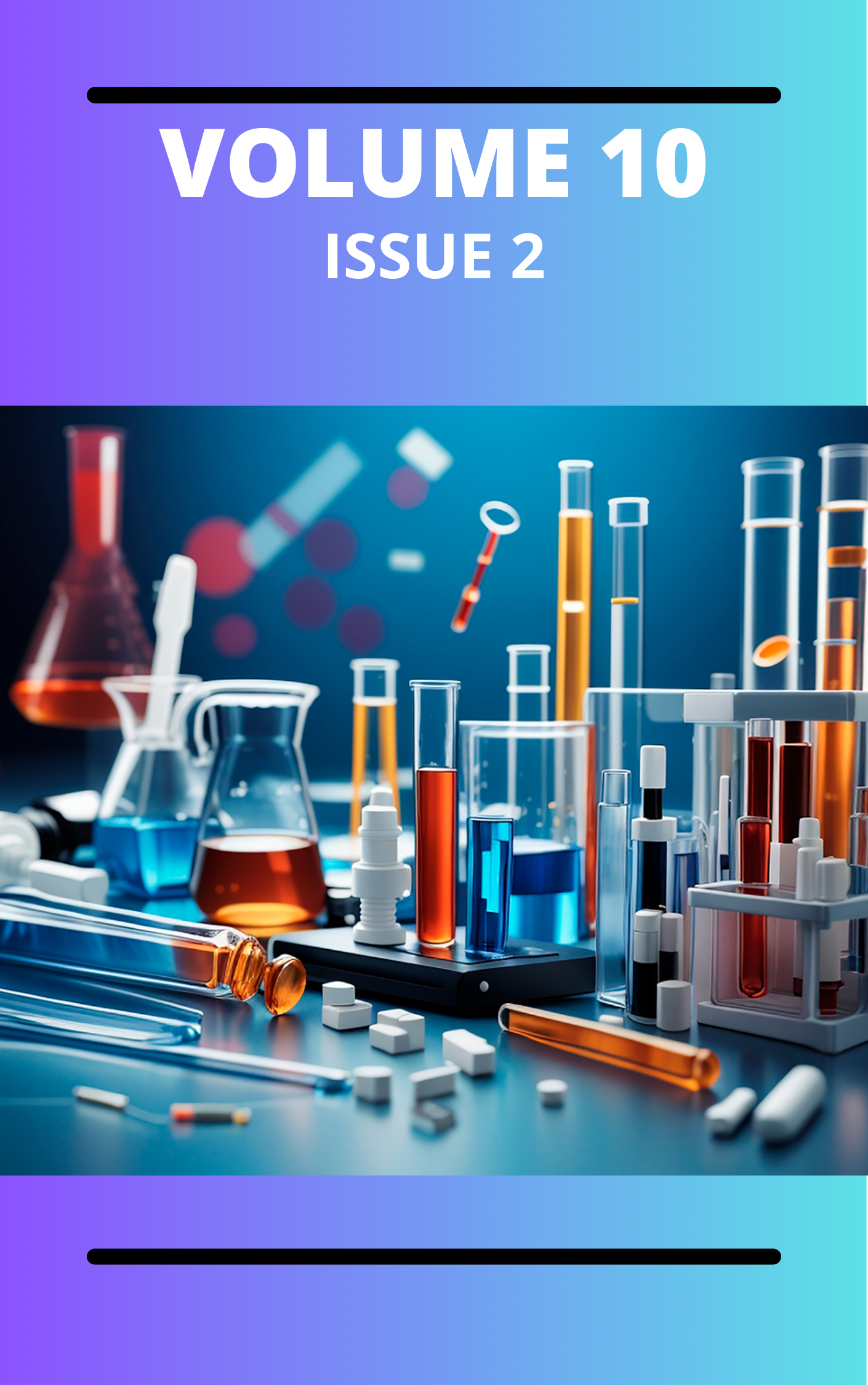Investigation of the Adsorptive And Inhibitive Properties Of Cucurbita Maxima Peel Extract And Halide Ions As Inhibitors For Stainless Steel in 1m H2so4 Solution
Keywords:
Metal, degradation, protection, Cucurbita maxima wasteAbstract
In consideration of the need to populate the research database with information on green corrosion inhibition, the present study investigated the corrosion inhibition efficiency of various concentrations of Cucurbita maxima peel extract on Grade 304 austenitic stainless steel in 1 M H2SO4 using two basic analytical methods, namely gravimetric and electrochemical methods. The extract showed a progressive increase in inhibition efficiency with an increase in concentration but with a decrease in temperature, the efficiency was observed to decline. employment of synergistic combination of the extract with iodide ions extended the maximum inhibition efficiency from 88.27 to 90.20 % for PCM with KI at 0.7 g/L extract concentration for 3 hours’ immersion time and an efficiency of 90.43% at 0.7 g/L concentration with KCl at 30 ⁰C. Evidences from the polarization curve indicated that C. maxima peel functions as a mixed-type inhibitor. The inhibition action of the peel extract is due to the adsorption of the extract compounds on the stainless-steel surface. The presence of the extract increased the activation energy of the corrosion reaction. The evaluated range for the ΔGads values confirmed that the adsorption is spontaneous and operated through a physical adsorption mechanism that best fitted the Langmuir adsorption model. . The scanning electron micrograph of the metal surface shows a smooth surface compared to the surface obtained for the control experimental set-up. The greatest efficiency was achieved using the peel extract with KI halide ion which shows that the peel of C. maxima is a very effective corrosion inhibitor on stainless steel in an acidic medium.
Downloads
Published
Issue
Section
Most read articles by the same author(s)
- Patricia Ese Umoru, Ameh David Onu, The Redox Reaction between Di-μ-Oxo-Tetrakis (2, 2’- bipyridine) – Dimanganese (III, IV) Perchlorate and 1, 3-Dihydroxybenzene in Hydrochloric Acid , Communication In Physical Sciences: Vol. 6 No. 1 (2020): VOLUME 6 ISSUE 1
- Nnabuk Okon Eddy, Rajni Garg, Femi Emmanuel Awe, Habibat Faith Chahul, Computational Chemistry studies of some cyano(3-phenoxyphenyl) methyl isobutyrate derived insecticides and molecular design of novel ones , Communication In Physical Sciences: Vol. 5 No. 4 (2020): VOLUME 5 ISSUE 4
- Femi Emmanuel Awe, Muhammad Dahiru Faruruwa, Hadiza Abba, Green Synthesis, Characterization and Antibacterial Activity of Zinc Oxide and Titanium Dioxide Nanoparticles Using Terminalia Catappa and Cymbopogon Citratus Leaf Extract , Communication In Physical Sciences: Vol. 7 No. 4 (2021): VOLUME 7 ISSUE 4
Similar Articles
- Nathaniel Atamas Bahago, Gideon Wyasu, Mary Gojeh, Optimization of Activated Carbon Preparation from Corncob Wastewater Treatment , Communication In Physical Sciences: Vol. 7 No. 2 (2021): VOLUME 7 ISSUE 2
- Gideon Wyasu, Batch adsorption of Mn2+ and Co3+ from Refinery wastewater using activated carbon from epicarp of Detarium microcarpum and Balanites aegyptiaca shells , Communication In Physical Sciences: Vol. 3 No. 1 (2018): VOLUME 3 ISSUE 1
- Felicia Uchechukwu Okwunodulu, Stevens Azubuike Odoemelam, Comparative Studies On Infrared Analysis of Some Waste Biomass in Heavy Metals Adsorption , Communication In Physical Sciences: Vol. 8 No. 4 (2022): VOLUME 8 ISSUE 4
- Kantoma, D.,, Green Synthesis of Silver nanoparticlesNanoparticles(AgNPs) using Calotropis procera leaves Leaves extract Extract and it adsorption Adsorption properties Properties for the removal Removal Chromium(III) ion. of Cr3+ from Petroleum Waste Water , Communication In Physical Sciences: Vol. 11 No. 1 (2024): VOLUME 11 ISSUE 1
- Aniekan Udongwo, Oluwafisayomi Folorunso, Resource Recovery from Maize Biomass for the Synthesis of SiO2 Nanoparticles and Crystallographic Analysis for Possible Applications , Communication In Physical Sciences: Vol. 12 No. 2 (2025): VOLUME 12 ISSUE 2
- Mu’awiya Baba Aminu, Hareyani Zabidi, Juliet Ngozi Chijioke-Churuba, Saleh Mamman Abdullahi, Kolapo Fasina, Aliyu Abubakar, Muhammad Nurudeen Mashin, Abdulmalik Nana Fatima, Bertha Onyenachi Akagbue, Olusola Kolawole Ogunmilua, Environmental and Public Health Challenges of Phases Towards Cement Production, Remediation Monitoring and Evaluation Strategies , Communication In Physical Sciences: Vol. 12 No. 1 (2024): VOLUME 12 ISSUE 1
- Temitope Sunday Adeusi, Ayodeji Aregbesola, Impact of Climatic Condition on the Life Cycle of Water Contaminants , Communication In Physical Sciences: Vol. 9 No. 4 (2023): VOLUME 9 ISSUE 4
- Eneni Roberts Inala, BIOACCUMULATION OF ENVIRONMENTAL CONTAMINANTS IN OYSTER (Crassostea sp.) TISSUES IN BAYELSA STATE, NIGERIA , Communication In Physical Sciences: Vol. 12 No. 4 (2025): VOLUME1 2 ISSUE 4
- Gideon Wyasu, B. Myek, Synthesis of an azo dye and its cobalt complex derived from 3-aminophenol , Communication In Physical Sciences: Vol. 6 No. 1 (2020): VOLUME 6 ISSUE 1
- Kantoma, Dogara , Nwokem, Calvin Onyedika, Zakka Israila Yashim, Zaharaddeen Nasiru Garba, Green Synthesis of Silver Nanoparticles(AgNPs) using Calotropis procera Leaves Extract and it Adsorption Properties for the Removal of Cr3+ from Petroleum Waste Water , Communication In Physical Sciences: Vol. 10 No. 3 (2023): VOLUME 10 ISSUE 3 (2023-2024)
You may also start an advanced similarity search for this article.




